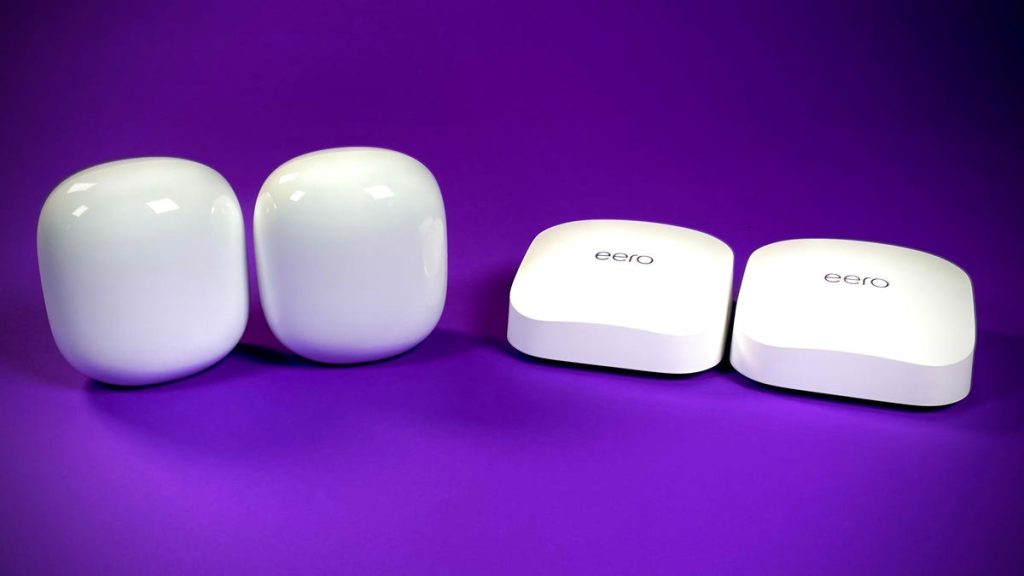Upgrading to a mesh router that utilizes multiple devices to relay a stronger Wi-Fi signal throughout your home is a wise decision, particularly if you live in a large, multistory household. Two notable systems from Google and Amazon, the Nest Wifi Pro and the Eero Pro 6E, both offer enhanced mesh performance through Wi-Fi 6E technology. These systems also support the universal smart home standard Matter and other features for home automation enthusiasts. In a head-to-head comparison, we will explore the performance of these two systems and determine which one stands out.
Google’s Nest Wifi Pro is a top-of-the-line mesh router that features significantly faster speeds with full support for Wi-Fi 6E. It utilizes the 6GHz band, which provides more bandwidth and less interference compared to the 5GHz band. The Nest Wifi Pro devices are identical and interchangeable, allowing any of them to serve as the main router. Available in four colors, the Nest Wifi Pro is priced at $200 for a single device, $300 for a two-pack, or $400 for a three-pack. With features like AXE5400 speed rating, tri-band build, and support for Wi-Fi 6E, the Nest Wifi Pro offers a reliable and robust mesh networking solution.
On the other hand, the Eero Pro 6E from Amazon is the fastest and most capable mesh router from the brand. It incorporates Wi-Fi 6E technology and offers advanced features like support for Amazon’s Alexa, built-in radios for Zigbee and Thread, and backwards compatibility with older Eero devices. Priced at $185 for a single device, $300 for a two-pack, or $410 for a three-pack, the Eero Pro 6E provides an affordable option for users seeking high-performance mesh networking. With features like AXE5400 speed rating, tri-band build, and multi-gig WAN port, the Eero Pro 6E is a compelling choice for home networking enthusiasts.
In terms of design aesthetics, the Nest Wifi Pro offers a colorful choice with four color options, while the Eero Pro 6E features a minimalist white design. When it comes to hardware, the Eero Pro 6E has the edge with a multi-gig Ethernet jack, built-in Zigbee radio, and backwards compatibility with older Eero devices. In terms of speeds, the Eero Pro 6E outperforms the Nest Wifi Pro with higher download speeds on average but experiences some inconsistencies. The Nest Wifi Pro, on the other hand, provides stable and reliable performance without significant speed variations.
Both the Nest Wifi Pro and the Eero Pro 6E offer user-friendly setups and controls through their respective apps. While the Google Home app integrates well with Nest Wifi Pro, the Eero app provides a streamlined router-focused experience. In terms of smart home capabilities, both systems support Matter and Thread protocols, but the Eero Pro 6E includes a built-in Zigbee radio, giving it an edge in smart home integration. From a value perspective, both systems offer competitive pricing for Wi-Fi 6E mesh routers, making them attractive options for consumers looking to upgrade their home networks. Ultimately, the Eero Pro 6E holds a slight advantage over the Nest Wifi Pro due to its more advanced hardware features and strong performance.


